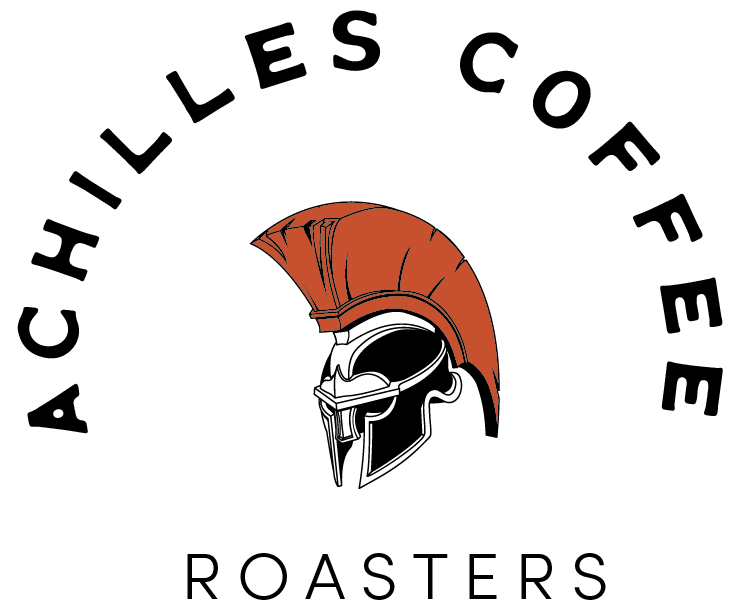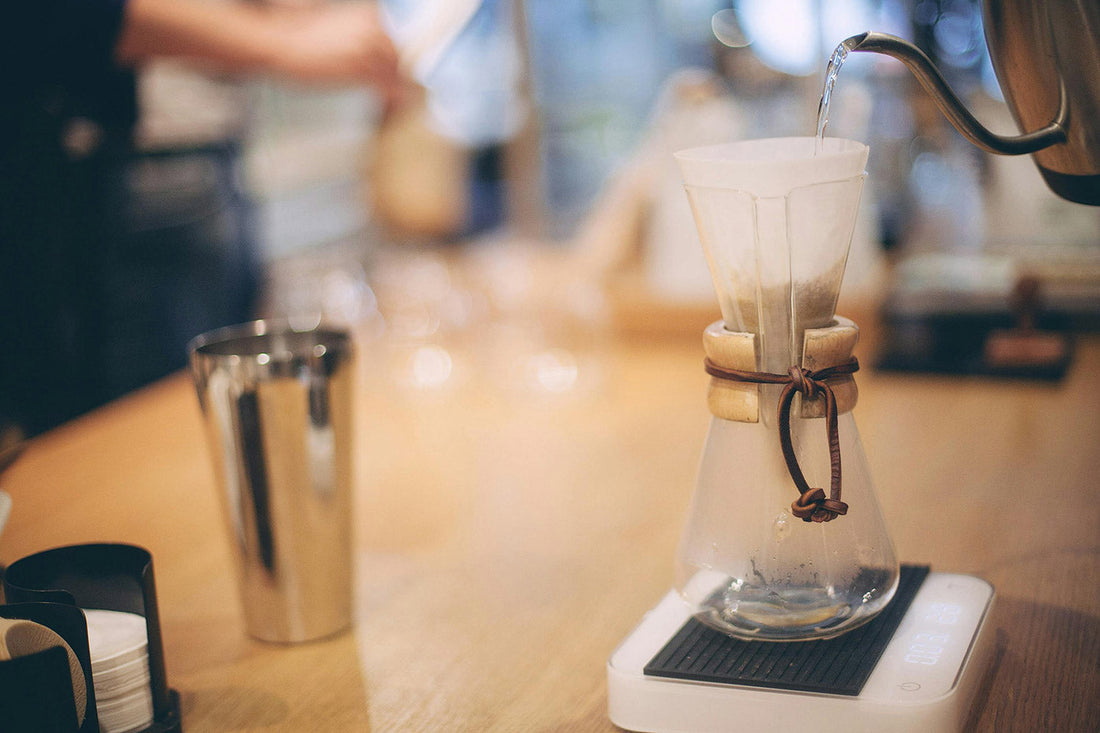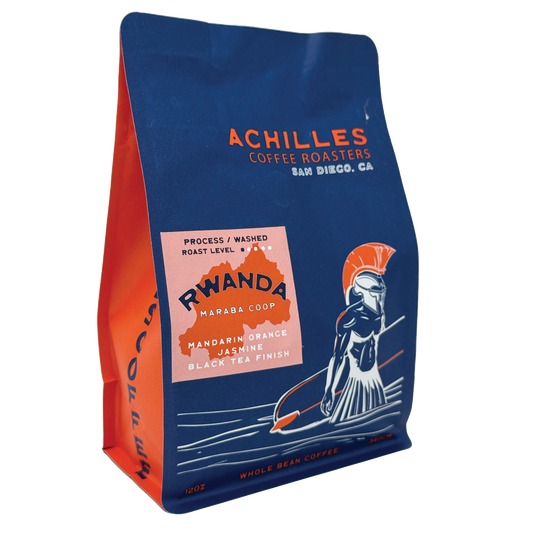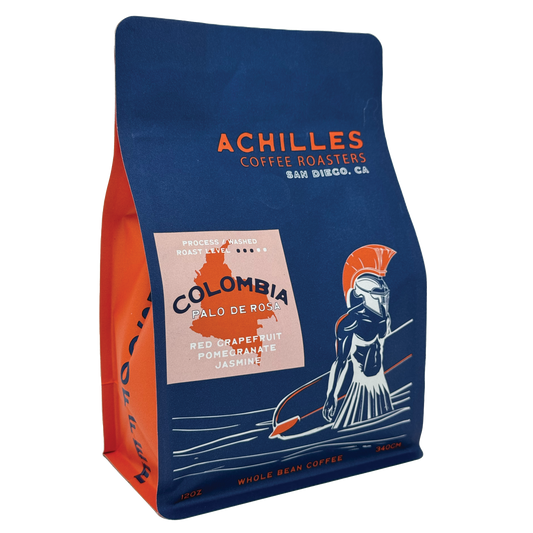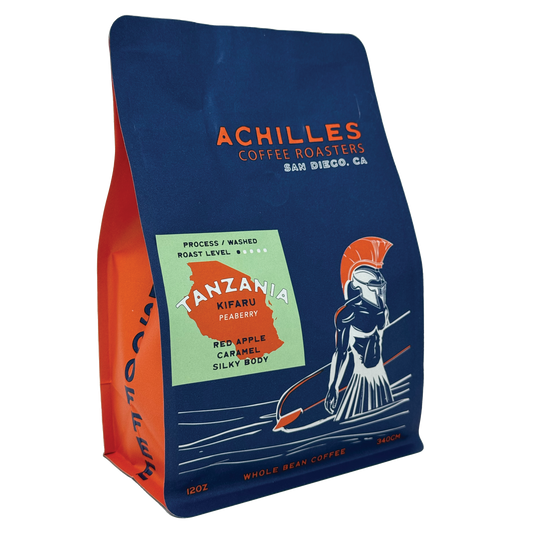When we think about brewing great coffee, we often focus on the beans, the grinder, and the brew method. But there’s one critical element that’s easy to overlook—water quality. Since coffee is more than 98% water, the water you use can either enhance or ruin your cup.
In this deep-dive guide, we’ll explore:
-
Why water quality matters so much for coffee flavor
-
What minerals and properties make water “coffee-friendly”
-
How to test and improve your water at home
-
The best water solutions for home baristas
Let’s unlock the secret ingredient behind every great cup!
Why Water Quality Matters in Coffee Brewing
Water is the most overlooked yet most influential ingredient in your coffee. While much attention is paid to the beans, grinder, and brewing method, the truth is simple: your coffee is over 98% water. That means the quality of your water directly affects how your coffee tastes—possibly more than any other variable.
Coffee Is Mostly Water
This might sound obvious, but many home brewers underestimate just how critical water is to flavor development. The role of water in coffee isn’t passive—it’s the active extraction agent. As hot water flows through ground coffee, it dissolves a wide range of compounds: acids, sugars, oils, aromatic molecules, and caffeine. The balance, clarity, and depth of flavor in your cup all depend on how effectively your water extracts these solubles.
But water doesn’t just carry these flavors—it also influences which flavors are extracted and how they're perceived. Good water helps coffee taste clean, sweet, and vibrant. Bad water can dull flavors, overemphasize bitterness, or introduce off-notes like chlorine or metallic tastes.
What Happens When Water Quality Is Off?
If your water has the wrong mineral content or contains chemical contaminants, it can throw off the entire extraction process. Here’s how:
Too soft (low mineral content):
Water with very low levels of dissolved minerals, such as distilled or reverse osmosis water, doesn’t extract coffee compounds efficiently. This results in flat, dull, or weak-tasting coffee. With no minerals to support the flavor balance, the brew may also have an overly sharp or acidic edge.
Too hard (high mineral content):
Water that contains excessive calcium or magnesium can over-extract certain compounds, emphasizing bitterness and masking nuance. It may also cause scaling inside your coffee machine, damaging equipment and affecting temperature stability over time.
High in chlorine or other additives:
Many municipal water supplies contain chlorine or chloramine to sanitize drinking water. While safe for consumption, these chemicals can introduce unpleasant flavors—ranging from a chemical-like aftertaste to a dull or metallic profile. They can also interfere with coffee extraction chemistry by binding to flavor compounds before they reach your cup.
Unbalanced mineral ratios:
Even if your water has an ideal amount of total dissolved solids (TDS), the specific ratios of calcium, magnesium, sodium, and bicarbonate matter. These minerals interact differently with coffee compounds. For example, magnesium tends to enhance perceived sweetness and body, while high bicarbonate levels may flatten acidity and make coffee taste muted or chalky.
What’s the Ideal Water for Brewing?
According to standards set by the Specialty Coffee Association (SCA), the ideal brewing water should have:
-
Total Dissolved Solids (TDS): 75–250 ppm
-
Calcium hardness: 50–70 ppm
-
Magnesium: ~10 ppm
-
Bicarbonate (alkalinity): 40–70 ppm
-
pH: 6.5–7.5 (neutral to slightly acidic)
This balance ensures that the water is hard enough to extract coffee effectively but not so hard that it causes scale buildup or flavor distortion. In short, the goal is to create water that supports clarity, balance, and full flavor development—without getting in the way.
How to Improve Your Brewing Water
If you’re using tap water and notice inconsistent or off-tasting brews, consider the following options:
Use filtered water:
A high-quality carbon filter (like those in Brita or PUR pitchers) can reduce chlorine and some metals, improving flavor without removing essential minerals. This is often a great starting point for most home brewers.
Buy bottled water optimized for coffee:
Some bottled waters, like Third Wave Water or Crystal Geyser (depending on the source), are ideal for coffee due to their mineral balance. Specialty mineral packets are also available that let you create perfect brewing water by adding them to distilled or reverse osmosis water.
Install a water testing kit or TDS meter:
If you want to fine-tune your water for espresso or pour-over, test your water's mineral content. Kits and digital TDS meters are affordable and give you insight into what you're working with—and how to improve it.
Use a home water system:
For serious coffee enthusiasts or prosumers, installing an under-sink filtration system or a reverse osmosis unit with a remineralization cartridge gives full control over water chemistry. It’s a more advanced (and expensive) option but offers unmatched precision and consistency.
What Happens With Bad Water
Common water issues include:
-
Chlorine/chloramine: Adds a chemical taste and flattens coffee’s complexity.
-
Too soft (low minerals): Under-extracts, leading to sour or weak coffee.
-
Too hard (high minerals): Over-extracts bitter compounds, causes scale buildup.
-
Off flavors: Metallic, musty, or stale notes can come straight from the tap.
Bad water = dull, flat, or unpleasant coffee—even with great beans.
The Science: What Makes Water Good for Coffee?
The Specialty Coffee Association (SCA) and other experts have identified key water characteristics for ideal coffee extraction:
|
Parameter |
Target Range |
Why It Matters |
|
Total Dissolved Solids (TDS) |
75–250 ppm |
Balance of minerals that aid extraction |
|
Calcium hardness |
~50–75 ppm |
Enhances extraction, but too much = bitterness |
|
Magnesium |
~10 ppm |
Helps highlight acidity and sweetness |
|
Alkalinity |
40 ppm |
Buffers acidity, prevents sour or sharp taste |
|
pH |
~7 (neutral) |
Too acidic or too basic water alters flavor |
|
No chlorine/chloramine |
0 ppm |
Avoids chemical off-tastes |
Note: Different brew methods (e.g., espresso vs. pour-over) might benefit from slightly different water profiles, but these targets work well for most.
How to Test Your Water at Home
Testing your water is easier than you might think.
Options:
- Test strips: Cheap, fast, give a rough idea of hardness and pH.
- TDS meters: Measure total dissolved solids in ppm (but not specific minerals).
- Lab testing kits: More accurate; some coffee water kits include everything you need to measure calcium, magnesium, alkalinity, and more.
Pro tip: Start by asking your local water supplier for a water quality report—they often provide free annual summaries.
Common Water Sources for Home Coffee Brewing
Tap Water
-
May contain chlorine, chloramine, or high hardness
-
Highly variable depending on location
-
Not recommended without filtering
Filtered Tap Water
-
Removes chlorine and some impurities
-
Improves taste and consistency
-
Affordable first step
Bottled Water
-
Not all bottled waters are suitable—many are too soft or too hard
-
Look for brands with balanced mineral content (some baristas like Crystal Geyser or Volvic, depending on region)
Custom Coffee Water (DIY or Pre-made)
-
Use mineral packets (e.g., Third Wave Water) + distilled water for precise control
-
Allows you to match SCA standards easily
-
Excellent for espresso machines (prevents scale)
How to Improve Your Water for Coffee
How to Improve Your Water for Coffee
If you’ve dialed in your grind size, brewing method, and technique but your coffee still tastes flat, sour, or dull, your water may be the missing piece. Fortunately, improving your water quality doesn’t require a chemistry degree—just the right tools and a little know-how. Here are the most effective ways to enhance your water for better coffee at home.
Carbon Block Filter Pitcher or Under-Sink System
Removes chlorine and improves taste; brands like Brita, PUR, or ZeroWater are accessible and affordable.
A carbon block filter is one of the easiest and most affordable ways to improve tap water. These filters use activated carbon to remove chlorine, certain heavy metals (like lead), and other impurities that can negatively affect the taste of coffee. While they don’t dramatically alter the mineral content, they significantly improve the clarity and cleanliness of the water.
Filtered water from these systems won’t always hit the “ideal” coffee water standard on its own, but it’s a major upgrade over untreated tap water. For many people, this is the simplest way to get better-tasting brews with minimal effort.
-
Pros: Inexpensive, easy to find, improves taste, reduces chlorine and odors
-
Cons: Doesn’t allow you to customize mineral content, may not remove all contaminants
-
Best for: General home use, especially in cities with heavily chlorinated tap water
Third Wave Water or DIY Mineral Recipes
Add precise minerals to distilled or reverse osmosis (RO) water for optimal extraction and machine safety.
If you want to brew like a professional, using mineral-enhanced water is one of the most precise methods available. Products like Third Wave Water provide pre-measured packets of minerals designed to be added to distilled or reverse osmosis water, giving you a scientifically calibrated water profile optimized for coffee.
These recipes are based on the Specialty Coffee Association's recommended brewing water standards and are formulated to enhance extraction while minimizing scale buildup in espresso machines.
Alternatively, if you’re comfortable with a bit of DIY, you can make your own mineral water by adding specific amounts of magnesium sulfate, calcium chloride, and baking soda to distilled water. This gives you full control over the mineral composition—and a deep understanding of how each component affects flavor.
-
Pros: Precise control over water chemistry, enhances flavor clarity and balance, reduces equipment scale
-
Cons: Requires either purchasing packets or mixing minerals by hand, involves extra steps
-
Best for: Coffee enthusiasts, home baristas, and anyone using high-end equipment
Inline Filtration Systems
Ideal for serious home setups—especially when you want to protect a premium espresso machine.
If you’ve invested in a high-quality espresso machine or are brewing multiple cups a day, it may be worth installing a dedicated inline filtration system. These systems connect directly to your water line (under your sink or behind your coffee bar) and typically use multi-stage filtration to remove contaminants, balance minerals, and regulate pH levels.
Some advanced inline systems even include remineralization cartridges designed specifically for coffee. They ensure your water has the correct hardness and alkalinity for both flavor and equipment safety—preventing limescale buildup in boilers, pumps, and valves.
-
Pros: Continuous filtered water, consistent quality, excellent machine protection
-
Cons: Higher upfront cost, professional installation may be required, less portable
-
Best for: Advanced home setups, espresso users, and those seeking long-term water consistency
The Hidden Danger: Limescale in Your Coffee Equipment
Hard water doesn’t just affect taste—it causes scale buildup in espresso machines, kettles, and brewers. This leads to:
-
Clogged pipes and valves
-
Inefficient heating
-
Expensive repairs
Preventative water treatment is much cheaper than descaling or fixing damaged gear.
Real-World Example: Water’s Impact on Flavor
Imagine you brew two cups of pour-over:
-
One with hard, unfiltered tap water (200+ ppm, high calcium)
-
One with balanced mineral water (TDS 120 ppm, no chlorine)
Cup 1: Bitter, flat, harsh finish
Cup 2: Sweet, clean, complex, with pleasant acidity
Same coffee, same brew method—water made the difference.
FAQs About Water & Coffee
Water is one of the most misunderstood ingredients in coffee brewing, and even seasoned home baristas have questions about what kind to use and how it affects both flavor and equipment. Below are answers to some of the most common questions about water and coffee—along with tips to help you make the best choices for your brew.
Can I use distilled water for coffee?
Short answer: No—not recommended.
Distilled water may seem like a “clean” choice, but it’s actually too pure for coffee brewing. Distilled water contains virtually no minerals, and those minerals are crucial to the extraction process. Without them, the water has a hard time drawing out the full range of soluble compounds in coffee, resulting in a brew that tastes flat, dull, or thin.
In addition, distilled water can be harmful to certain coffee equipment—especially espresso machines. Because it’s so pure, distilled water can be aggressive in corroding metal parts over time, particularly in boilers. Manufacturers often warn against using it for this reason.
Use it only if you’re planning to add minerals back in—for example, with a product like Third Wave Water or a custom DIY mineral recipe.
Is reverse osmosis (RO) water good for coffee?
Short answer: Not on its own—but it can be ideal when remineralized.
Reverse osmosis water is filtered to remove nearly all dissolved solids, much like distilled water. On its own, it lacks the essential minerals needed for effective extraction and good taste. However, unlike tap water, RO provides a clean slate that can be customized to ideal brewing specs.
By adding minerals back in, using a packet such as Third Wave Water or a specific remineralization blend, RO water becomes one of the best foundations for brewing. It gives you complete control over mineral content, prevents scaling, and allows for consistent flavor across different beans and brew methods.
This approach is especially popular with espresso enthusiasts who want to protect their machines while achieving optimal flavor.
How often should I descale my coffee machine?
Short answer: It depends on your water hardness and how often you brew.
Descaling removes mineral buildup—primarily calcium—from the internal components of your coffee machine. The frequency depends entirely on how hard your water is and how much you use the machine.
-
If you’re using hard tap water: Descale every 1–3 months.
-
If you’re using filtered or softened water: Every 3–6 months.
-
If you’re using mineral-balanced water (e.g., Third Wave Water): You might only need to descale once or twice a year—if at all.
Signs you may need to descale include: slower brew times, fluctuating water temperature, changes in flavor, or visible scale in your kettle or water tank.
To avoid unnecessary maintenance and extend your equipment’s lifespan, it’s best to track your water source and use mineral-controlled water whenever possible.
Bonus Tip:
If you’re unsure about your local water hardness, you can buy inexpensive hardness test strips or a digital TDS (Total Dissolved Solids) meter. These tools help you determine exactly how often you should descale and what filtration method is right for you.
Water doesn’t just affect taste—it affects everything about your brewing process. With the right approach, you can enjoy better coffee, longer-lasting equipment, and more consistency in every cup.
Best Practices for Home Baristas: Getting Water Right
As a home barista, you're already paying attention to grind size, brew ratios, and bean freshness—but water is just as crucial to your coffee’s flavor and your equipment’s longevity. Mastering water quality doesn’t mean becoming a water chemist. It just takes a few simple steps and a thoughtful approach. Here are the best practices to follow if you want to consistently brew great coffee at home.
Know Your Water’s Makeup
Before you can improve your water, it helps to understand what’s already in it. This means either testing your water or looking up your municipal water quality report, which is usually available online from your local water provider. Testing kits and TDS (Total Dissolved Solids) meters are also affordable and give quick insight into mineral levels and hardness.
Why it matters: Different regions have dramatically different water profiles. You might have very hard water loaded with calcium and magnesium—or soft water that lacks sufficient minerals for proper extraction. Knowing your baseline helps you decide what kind of filtration or treatment you need.
Filter Out Chlorine and Large Impurities—At Minimum
Even if you’re not ready to dive into advanced water customization, basic filtration is essential. Chlorine, sediment, and certain metals commonly found in tap water can negatively affect flavor and leave your coffee tasting metallic, flat, or chemically harsh. Using a simple carbon block filter (like Brita, PUR, or ZeroWater) can significantly improve taste and remove unpleasant odors.
Why it matters: These impurities don’t just affect taste—they can also interfere with extraction chemistry and cause buildup inside your brewing equipment.
Consider Mineral Balancing for Serious Coffee Brewing
If you’re chasing café-level results or brewing with high-end beans and gear, it’s worth going a step further. Mineral balancing means ensuring your water has the right levels of calcium, magnesium, and bicarbonates to extract coffee efficiently without creating scale or distorting flavor.
Using products like Third Wave Water or building your own mineral recipe with distilled or RO water allows for precise control over brew water chemistry. You’ll taste the difference—better clarity, enhanced sweetness, and more defined acidity.
Why it matters: Water that’s too soft or too hard can throw off flavor balance, limit extraction, or damage your equipment over time. Mineral-balanced water hits the sweet spot.
Protect Your Equipment with Good Water
Over time, hard water causes limescale buildup in espresso machines, kettles, and even automatic drip brewers. This not only impacts performance—leading to poor temperature stability and water flow—but can also shorten the lifespan of your gear and result in costly repairs.
Using properly treated water (filtered and appropriately mineralized) keeps your machine clean, running efficiently, and pulling consistently great shots. It also reduces the need for frequent descaling.
Why it matters: Your espresso machine is a significant investment. The right water helps protect that investment and keeps your shots tasting great.
Great Coffee Starts with Great Water
It’s easy to focus on beans, grind, and technique—but water is your foundation. Even the most expensive equipment and carefully sourced beans can’t overcome poor water quality. When you start with clean, balanced water, everything else in your coffee setup performs better.
Whether you’re making a morning French press or dialing in a single-origin espresso, don’t let bad water hold you back. Take the time to understand, treat, and optimize your water—it’s one of the easiest and most effective ways to elevate your daily brew.
Conclusion: Don’t Let Water Be the Weak Link
Water is the invisible ingredient that shapes every cup of coffee. By paying attention to water quality, you can bring out the best in your beans, protect your gear, and enjoy café-quality coffee at home. Don’t let all your careful grinding, dosing, and brewing go to waste—optimize your water, and taste the difference.
If you’d like help selecting a filter or water system, or want to try our house-roasted beans, visit Achilles Coffee Roasters in San Diego. We’re passionate about helping you brew better at home!
